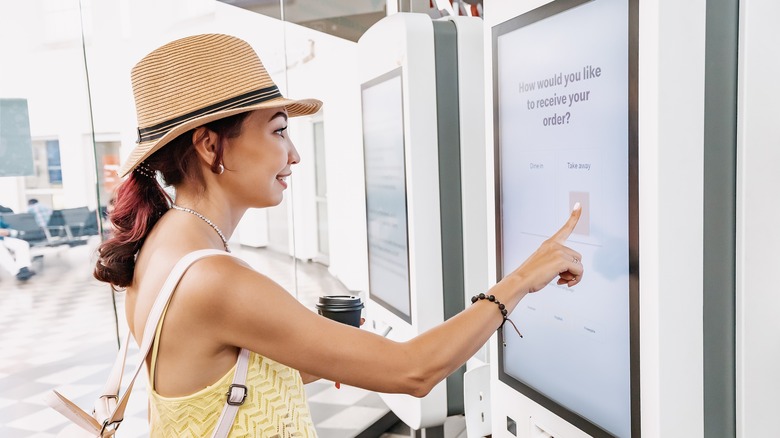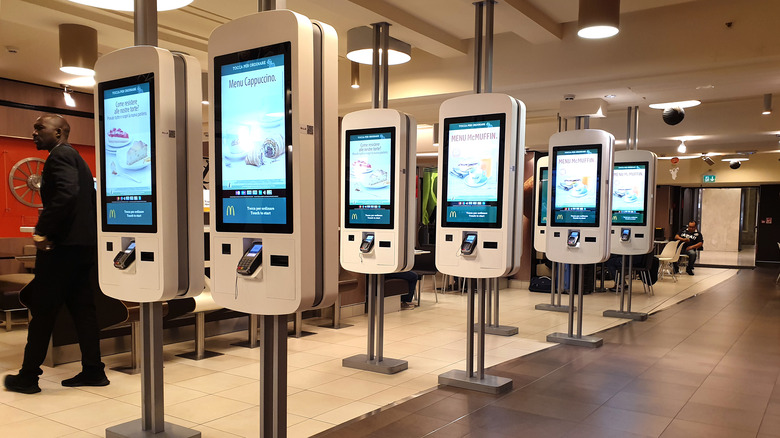Fast Food Self-Serve Kiosks Might Not Actually Save You Any Time
Consumers love convenience, and self-service kiosks are often seen as a quick and efficient way to place an order at a restaurant. By avoiding the line of hungry patrons and instead navigating the ordering interface themselves, people feel like they've saved themselves time while ordering. But in reality, customers may not just be spending more time ordering, but also spending more money in the process.
Research has found that people feel more comfortable ordering at self-service kiosks because they can take their time and make any desired modifications to their meals. While you may feel rushed and pressured to communicate your complex order to a busy cashier, kiosks offer a personal and somewhat private ordering experience. This results in a lengthier ordering process, and up to a 20% increase in spending on average, according to FoodTec Solutions. Kiosks are programmed to upsell, allowing customers to easily add items to their cart they may not have noticed or considered while a cashier was taking their order. The ability to easily modify and add to orders often results in an upcharge, as well.
Even with the increased spending, a majority of customers prefer this method of ordering. Forbes reported that 65% of customers prefer using self-service kiosks. Restaurant technology research conducted by Toast revealed that 54% of millennials feel their experience was enhanced by using a self-service kiosk, and many customers have even called for more self-service kiosks at restaurants.
Fast food kiosks could be the future of customer service, as long as they're working
In theory, implementing self-service kiosks at fast-food restaurants makes practical sense for a variety of reasons. Allowing the customer to feel at ease and take their time deciding what they want promotes a happy consumer experience, while the typical increase in spending benefits the restaurant chain. Employee safety plays another factor –- the COVID-19 pandemic saw a massive uptick in self-service kiosks. By eliminating face-to-face interaction while ordering, fast food chains were still able to service customers while eliminating some risk of transmission for employees.
With all of these benefits, implementing these kiosks sounds like a no-brainer. "The self-ordering kiosk is the movement of the future," Sam Zietz, CEO of self-service technology company Grubbrr, told Forbes. "We believe these kiosks will make cashiers obsolete." This sentiment might be alarming to cashiers until you consider the reliability of this new technology. Most restaurant-goers are all too familiar with the "out of order" sign displayed on a machine with a blank screen, pointing you back to the customer service counter you're used to. Just like the temperamental self-checkout counters that constantly need employee attention in order to function properly, the finicky nature of fast food kiosks still requires cashiers for maintenance and fulfillment when technical issues arise. Even with these common disruptions in the kiosk's ability to function, the push towards this faceless tech will likely continue in the next few years.

